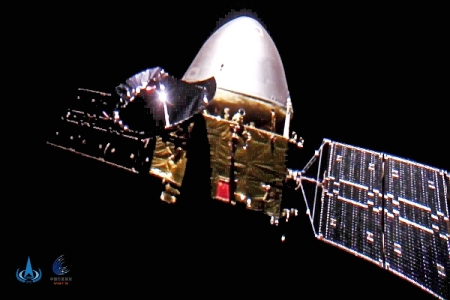Chang’e-5 now in lunar orbit
The new colonial movement: China’s lunar sample return probe Chang’e-5 has now entered in lunar orbit, with its landing to occur in three days.
Over the next week, the probe, composed of four parts – the orbiter, lander, ascender and Earth re-entry module – will perform multiple complicated tasks on a tight schedule.
The four parts will separate into two pairs. The lander and ascender will head to the moon and collect samples, while the orbiter and Earth re-entry module will continue to fly around the moon and adjust to a designated orbit, getting ready for the docking with the ascender.
The landing operation is expected in three days. Once touched down on the lunar surface, the lander will collect two kilograms of lunar sample.
The plan once on the surface is to gather a sample from the surface as well as from a six-foot deep core sample.
The new colonial movement: China’s lunar sample return probe Chang’e-5 has now entered in lunar orbit, with its landing to occur in three days.
Over the next week, the probe, composed of four parts – the orbiter, lander, ascender and Earth re-entry module – will perform multiple complicated tasks on a tight schedule.
The four parts will separate into two pairs. The lander and ascender will head to the moon and collect samples, while the orbiter and Earth re-entry module will continue to fly around the moon and adjust to a designated orbit, getting ready for the docking with the ascender.
The landing operation is expected in three days. Once touched down on the lunar surface, the lander will collect two kilograms of lunar sample.
The plan once on the surface is to gather a sample from the surface as well as from a six-foot deep core sample.




